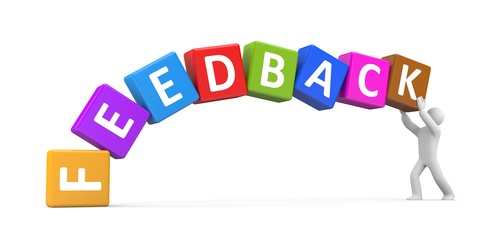
Art credit: Fotolia
 Art credit: Fotolia |
If learning is the goal of any project, then teachers and students enter a constant feedback loop. How - and how often - that feedback is structured is essential to success. Educators refer to the importance of formative assessments that provide mid-course corrections rather than relying on final or summative assessments.
Researchers such as Carol Dweck are working on helping students develop academic or growth mindset. It is important that students believe in their own ability to succeed.
When evaluating or reviewing student work, a rubric may be important, but it is not enough. When communicating with students, it is just as important to state why you, the teacher, are giving feedback at this point. It is how they will eventually internalize the ability to reflect on their own learning.
There is a critical difference between praise and feedback. Praise is not tied to learning results or performance, whereas feedback is. It is not a question of whether work is good or bad, but rather how the work expresses one's goal. Feedback is an interactive, two-way street.